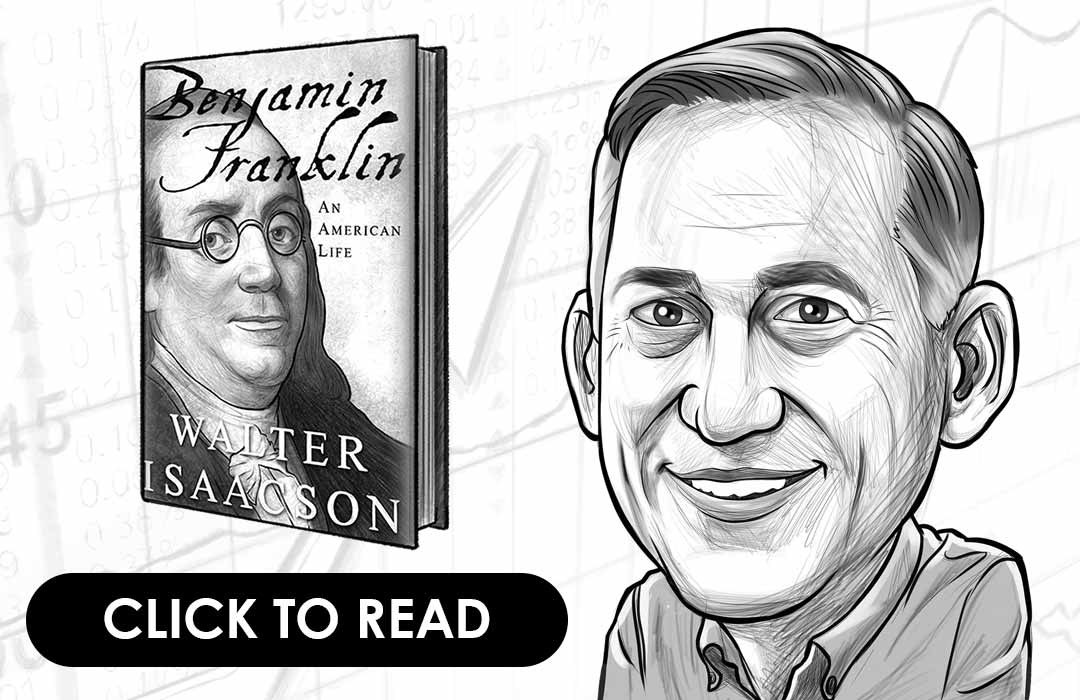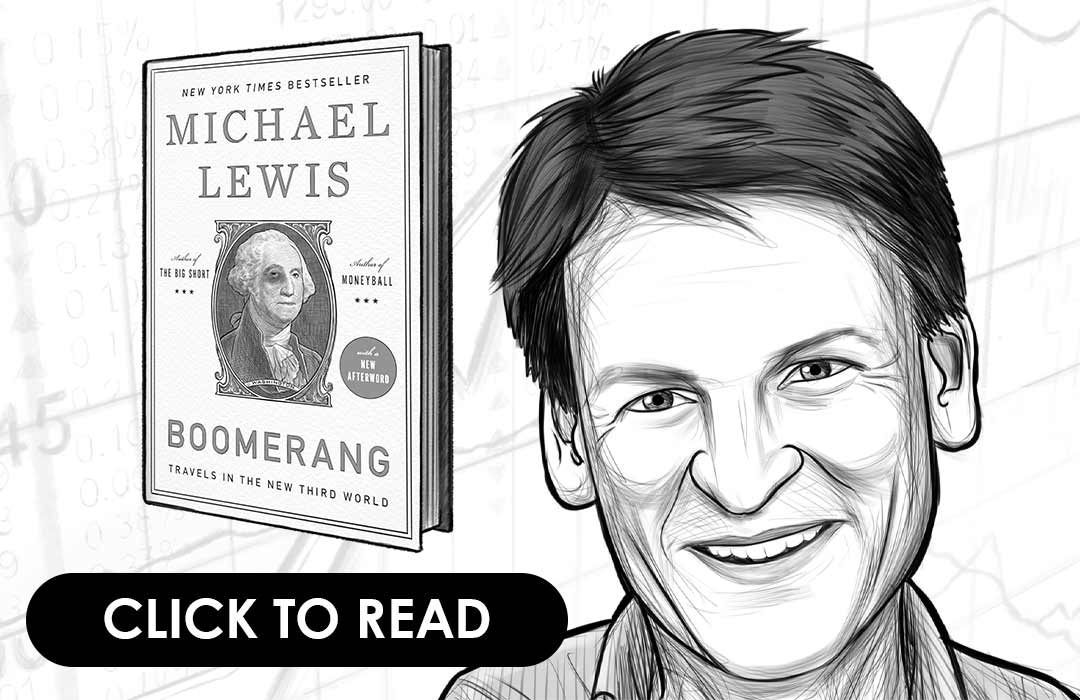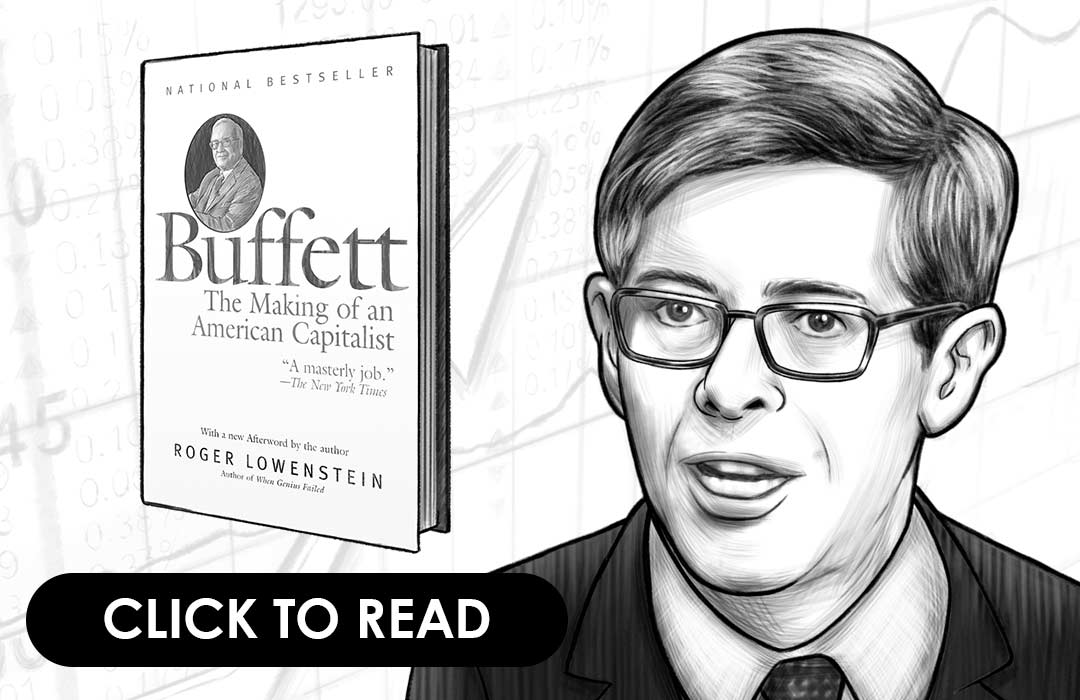AN EXECUTIVE SUMMARY OF ONE UP ON WALL STREET
By Peter Lynch
WHO IS PETER LYNCH?
Peter Lynch, born on January 19, 1944, is a legendary American stock investor and businessman. Lynch managed the Magellan Fund and generated a stunning 29.2% annual return over a 20-year period. Read on to know more about Peter Lynch and his investing strategies in: One Up On Wall Street.
PRESTON AND STIG’S GENERAL THOUGHTS ON ONE UP ON WALL STREET
One Up on Wall Street was one of the very first books I read when I started investing. Peter Lynch’s writing style is informative and he doesn’t make stock picking more complicated than it needs to be. I would recommend his book to anyone that’s interested in getting started. One key point to take away from this book is to not mistake familiarity with expertise.
Even after reading the book, it can be confusing to separate the two, which makes it even more important to point out. The novice investor is usually not equipped to invest in his/her first stock after reading this book, but it teaches the important foundation of where to start conducting decent analysis, and that is a valuable tool.
Understand the financial markets
in just a few minutes.
Get the daily email that makes understanding the financial markets
easy and enjoyable, for free.
CHAPTER 1: THE MAKING OF A STOCKPICKER
Contrary to popular myth, nobody is born with a knack for stock investing. It’s not something that’s in our genes, but one becomes a seasoned stock picker only after doing his research. Many people distrust the market, and Lynch’s family was no exception. However, when he took up a job in a golf course as a caddy and listened to too many conversations with his clients discussing the stock market, he realized that the positive evidence beat the negatives. After saving some money, he bought stocks for the first time at $7 per share, but as America went to war and he had luckily invested in an airfreight company, the stock rates hiked up, and he knew that bigger things were in store for him.
CHAPTER 2: THE WALL STREET OXYMORONS
When an average investor invests in stocks, he often confronts an oxymoron. Professional investing – you’ve definitely heard the term too many times – is also an oxymoron. Of course, this doesn’t point fingers at all the professionals out there, but free thinkers like Max Heine have also done a fantastic job at making money. They read the same magazines or books we do, but it’s important to understand what you’re up against. There are many exceptions where people who haven’t even attended business schools have done spectacularly well in the stock market, but it’s only because they rely on logic and are never limited by rules that are set by other professionals.
CHAPTER 3: IS THIS GAMBLING, OR WHAT?
There’s always a debate between people investing in stocks and those who prefer bonds. While stocks appear to be scary for some, bonds seem to be safe and secure. However, history shows that stocks have beaten bonds by a big margin since 1927. Comparatively, stocks have yielded 9.8 percent while bonds are yet to cross the 5 percent threshold.
Although there were numerous crashes, recessions, wars, and depressions, stocks have always yielded more, and it’s because you have the company as an ally with you. You grow as the company grows, and you even a part of the company, but with bonds, there is no such option. In fact, the bond market is also not completely risk-‐ free since it has become volatile over the years.
CHAPTER 4: PASSING THE MIRROR TEST
Before an investor jumps to invest in stocks, he must ask himself if he owns a house already. Investing in your home is a lot safer than the stock market. Most people manage to buy houses and it usually returns a decent profit. Also, it’s very rare for an individual to lose all his life savings on his home, but it just might happen with stocks.
The second question an investor needs to ask himself is if he can afford to invest in stocks at any given point in time. If you have too many commitments, it’s best to stay away from the stock market. The third and the most important question is to ask yourself if you have all the qualities – patience, persistence, detachment, and a lot more – before you invest in stocks.
CHAPTER 5: IS THIS A GOOD MARKET? PLEASE DON’T ASK
If it were possible to make money in the stock market by predicting the future, almost everyone would have lost money. Most people who claim to forecast a bear or bull market lose money, too. The stock market and the general economy move hand in hand sometimes, but it’s not possible to predict inflation or deflation either. Stock owners prepare themselves for an upcoming disaster, but how do they do that when they aren’t even aware of what it is? Therefore, instead of trying to predict or beat the market, an average investor should focus only on profitable companies that aren’t overpriced.
CHAPTER 6: STALKING THE TENBAGGER
A commoner has better chances of receiving tips about rising stock prices much before a professional. For instance, if you own a tire store and notice that there’s a lot of demand for Goodyear, you already have your tip. People don’t realize the opportunity they have in their hands and always look for something better, but it doesn’t work that way in the stock market.
Therefore, if you’re interested in the stock market, your best bet is to invest in something you’re knowledgeable about rather than looking for something better to turn up.
CHAPTER 7: I’VE GOT IT, I’VE GOT IT—WHAT IS IT?
When an average investor gets a tip, he jumps the gun and rushes to buy the stock, but is it a good move? Buying stocks without any research is like playing poker without even looking at the cards! That being said, it always looks wise to invest in big companies like Coca-‐Cola or GE to get maximum profits; however, it’s not for people looking to double or triple their stock prices in a short period of time. While big companies are great, it’s best to take a look at small companies if you want to make more money.
CHAPTER 8: THE PERFECT STOCK, WHAT A DEAL!
When looking for perfect stocks, there are a few things to consider. Firstly, notice the name. Is it dull and boring like, say, Pep Boys? Secondly, does it do something equally boring? The more boring, the better, and yes, it sounds ridiculous, but you have an edge if you buy stocks in such companies because they go up even before anyone notices it. Thirdly, if the company produces something that’s not all that interesting, it’s a big plus again.
There are no perfect companies in the stock market, but you need to look for something that has the potential to stretch, rather than looking at big companies that have no room to expand.
CHAPTER 9: STOCKS I’D AVOID
If there’s any stock you need to avoid, you need to take a look at some of the hottest picks available. For instance, when the carpet industry boomed, just about everybody invested in carpets, but the industry declined soon, and many people lost huge amounts of money. The problem with hot stocks is that they have too many competitors too soon, and they go out of business even sooner. Additionally, the problem is that the price declines rapidly without giving you a chance to sell what you have.
CHAPTER 10: EARNINGS, EARNINGS, EARNINGS
When you want to buy a stock, how do you determine whether it will increase in price? The best way to do that is to look at the earnings. A stock isn’t like a lottery ticket, and you actually become the owner of the company along with the others who bought the stocks, so it’s important to look at the earnings.
Several theories float around, but it all boils down to the assets and the earnings. When you invest, you do so by keeping the potential earnings of the company in mind. This also means that if the earnings crash, the stock crashes, too.
Understand the financial markets
in just a few minutes.
Get the daily email that makes understanding the financial markets
easy and enjoyable, for free.
CHAPTER 11: THE TWO-MINUTE DRILL
No matter what type of stock–cyclical, fast grower, stalwart, slow grower, turnaround, and asset play–you want to buy, you need to be able to come up with reasons (or a two-minute drill, in Lynch’ swords) to purchase it. This drill is essential because you need to be up to date with the company’s developments. Is the company releasing a new product that will hike the shares? It’s important for something dynamic to occur to keep the earnings when buying stocks.
CHAPTER 12: GETTING THE FACTS
When you want to buy a stock, how do you determine whether it will increase in price? The best way to do that is to look at the earnings. A stock isn’t like a lottery ticket, and you actually become the owner of the company along with the others who bought the stocks, so it’s important to look at the earnings. Several theories float around, but it all boils down to the assets and the earnings. When you invest, you do so by keeping the potential earnings of the company in mind. This also means that if the earnings crash, the stock crashes, too.
CHAPTER 13: SOME FAMOUS NUMBERS
What numbers should interest you when picking stocks? Well, there are many, but Lynch talks about a few. Firstly, the sales percentage should be attractive. For example, if you’re looking at Lexan Plastic, then you should note that it generates only 6.8% of GE’s revenues, which might not be a great deal for the shareholders. Secondly, study the P/E ratio, which should be proportional to the growth rate of any fairly priced company. Thirdly, analyze the cash position that gives a clear understanding of how much cash the company holds.
CHAPTER 14: RECHECKING THE STORY
Every company has a story, and it’s your job as an investor to check the story whenever you can. Companies grow in three phases, and while the first phase is to get established firmly, the second phase is all about expansion. The third phase is saturation since it no longer has any avenues to grow.
For instance, Sensormatic shares rose from a mere $2 to $40 dollars when they sold their detection systems, but once they ran out of stores to sell, the stock prices came crashing down since they had saturated the product. While the first phase is risky for an investor, the second phase is safe, but the third phase is simply problematic.
CHAPTER 15: THE FINAL CHECKLIST
In this chapter, Lynch offers a checklist every investor must follow. The checklist varies for every type of stock, but he discusses stocks in general, too. First and foremost, an investor needs to check the P/E ratio. Is it too high or too low? The ratio can be high or low, but it’s essential to compare one particular company with other companies in the same industry.
Secondly, investors need to be aware of the institutional ownership percentage. Also, if you are an investor looking for long-term prospects, you need to be able to pore over the balance sheets of companies to determine whether it’s weak or strong. Last but not the least, Lynch stresses the importance of cash position again.
CHAPTER 16: DESIGNING A PORTFOLIO
Many investors have high expectations from the stock market where they expect to get at least 30% returns every year. So, how do you determine whether you’re doing well or not? While it’s possible to make 30% sometimes, you should also accept it when you lose 20% suddenly when you least expect it. Also, you can look at safe mutual funds in the S&P 500 index to compare your returns because if you aren’t gaining anything extra with all that hard work, you might as well invest it in mutual funds to get your average returns without a headache.
CHAPTER 17: THE BEST TIME TO BUY AND SELL
It’s not possible to predict a perfect time to buy stocks because there is none; however, there are a few exceptions. From October to December, many investors are more than happy to sell their stocks to show their tax loss, and although it’s ridiculous to be happy about failures, this period usually shows a sharp dip that gives you more opportunities to invest. If you don’t want to invest or are short of money in this period, you can always wait for collapses, free-falls, and hiccups that occur now and then.
CHAPTER 18: THE TWELVE SILLIEST (AND MOST DANGEROUS) THINGS PEOPLE SAY ABOUT STOCK PRICES
There’s no dearth of rumors in the stock market, and some are more ridiculous than others. Even professionals fall prey to rumors, and you shouldn’t be surprised if they tell you that stocks that have fallen too low already can’t go any lower. This is not only silly, but it can be dangerous if you hold on to your bad stocks even when they hit rock bottom. Conversely, experts may also tell you that if a stock is too high, it can’t ride up any higher. This is also a myth. Remember, there’s no limit, and stocks can go high as long as the company has chances to improve further.
CHAPTER 19: OPTIONS, FUTURES, AND SHORTS
There are too many investment gimmicks making the rounds, and with stocks being so difficult to predict in the first place, there’s no necessity for additional side bets that only serve as distractions. This doesn’t mean that futures are completely useless because they help farmers make profits too, but since the stock market is not a commodity that has a relationship between the consumer and the producer, it’s not possible to compare them.
Understand the financial markets
in just a few minutes.
Get the daily email that makes understanding the financial markets
easy and enjoyable, for free.
CHAPTER 20: 50,000 FRENCHMEN CAN BE WRONG
The market can sometimes have a mind of its own. For instance, when people expected the stocks to decline drastically after President Kennedy was shot, it only dipped by 3% and astonishingly went up and also recovered within just three days. This incident–along with various other instances–is proof that the market can go in the opposite direction no matter what the fundamentals say.







